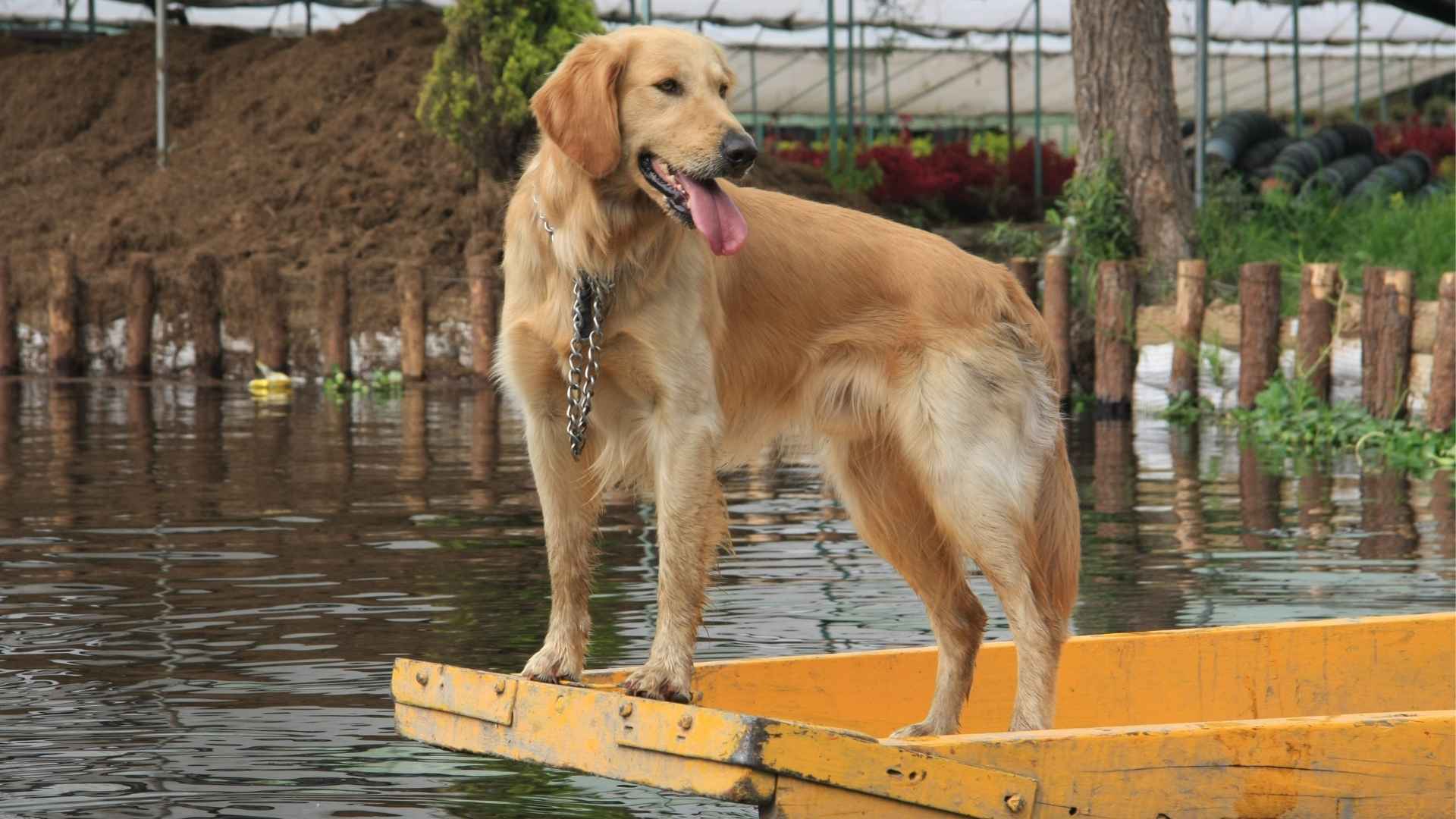There’s nothing quite like cruising on open water with the wind in your hair and your best furry friend by your side. But not all dogs are cut out for boat life. From handling waves to sharing tight quarters, life on a boat requires a canine companion that’s not only comfortable around water but also adaptable, well-behaved, and calm in new environments. The good news? Some breeds were practically born for it.
Whether you’re navigating a sailboat, zipping across a lake in a speedboat, or paddling down a quiet river in a canoe, the right dog can make your aquatic adventures even more rewarding. Certain breeds love water, enjoy lounging in the sun, and have the balance and temperament to handle a moving deck with ease. Size, energy level, and swim-readiness are all important factors to consider.
In this article, we’ll spotlight the top dog breeds best suited for life on a boat. Your future first mate may already be wagging their tail, ready to set sail!
Dog Breeds Suited for Life on a Boat
1. Labrador Retriever
The Labrador Retriever is an energetic, sociable, and affectionate breed, according to the AKC. Originally bred as a fisherman’s helper, Labs are equipped with water-resistant coats, webbed feet, and strong, otter-like tails that act as rudders in the water.
Their enthusiasm for swimming and being by their owners’ side means they’re often found joyfully leaping from boats for a splash or calmly standing on deck, scanning the horizon. Medium to large in size, ranging from 55 to 80 pounds, these dogs thrive in environments where they can stay active and engaged.
Temperament
Labradors are renowned for their even temperament and social nature. They’re affectionate, eager to please, and bond easily with both people and other pets. Labs are also highly trainable, making them well-suited to the structure and safety routines required on a boat.

Their playful yet steady demeanor ensures they remain calm under pressure, while still being alert and ready for action.
Fun Fact: Originally known as St. John’s Water Dogs, Labradors earned their name and reputation by assisting fishermen with retrieving nets and lost lines in icy waters.
2. Portuguese Water Dog
With “water” right in the name, the Portuguese Water Dog is a natural choice for anyone seeking a reliable canine companion on the water. Originally bred to assist fishermen along the coast of Portugal, retrieving nets, delivering messages between boats, and even herding fish, this breed is hardwired for aquatic adventures.
Their waterproof, curly coat and webbed feet make swimming second nature, and they’ll happily jump overboard for a quick dip or a job well done. Their size, typically 35–60 pounds and up to 23 inches tall, is ideal for maneuvering around boats of various sizes.
Temperament
Portuguese Water Dogs are spirited, intelligent, and endlessly affectionate. They bond deeply with their families and love being included in daily activities, especially those that involve splashing around. PetMD explains that the cheerful and loving Portuguese Water Dog can become a devoted family companion when provided with early training, regular exercise, and plenty of attention.
They thrive on both mental and physical stimulation, making boating excursions a perfect outlet. Their eager-to-please attitude also makes them highly trainable and responsive, traits that are especially valuable in the unpredictable environment of life at sea.
Fun Fact: Bo and Sunny, the beloved pets of the Obama family, are Portuguese Water Dogs who helped put this lovable, seafaring breed in the national spotlight.
3. Newfoundland
Bred in Canada to assist fishermen, these gentle giants are natural-born swimmers with webbed feet, a powerful frame, and a thick, water-resistant double coat that helps them brave rough waters with ease. Purina describes the Newfoundland as a true gentle giant among dog breeds.
Whether retrieving fishing nets or performing water rescues, Newfoundlands have a long history of excelling on and around boats. However, their massive size means space and ventilation are essential when bringing them aboard.
Temperament
Despite their size, Newfoundlands are famously gentle, affectionate, and patient, especially with children. Their calm demeanor makes them excellent boat dogs, as they’re unlikely to be spooked by rocking waves or new environments.
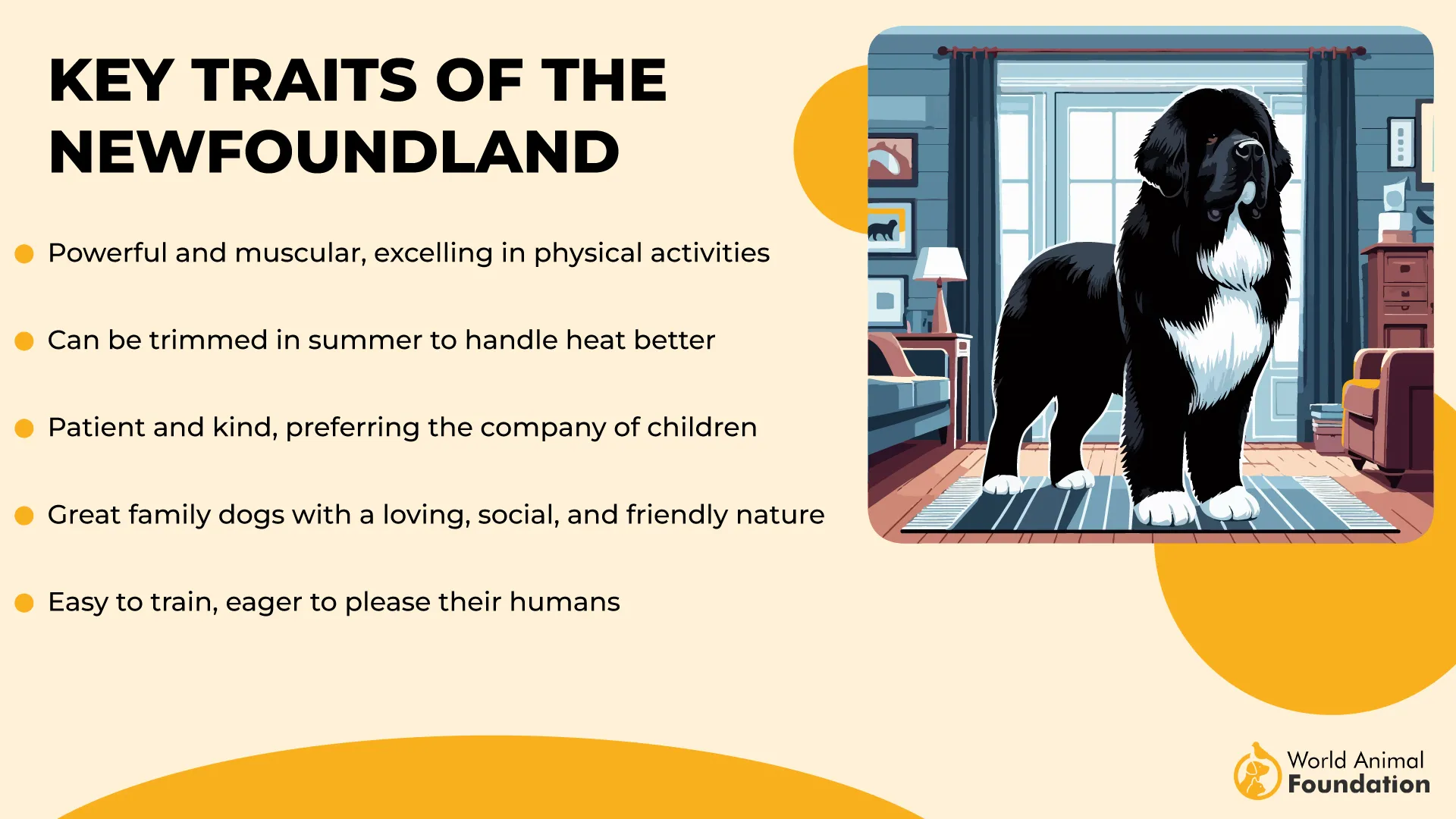
They thrive on companionship and are incredibly loyal to their families. Owners should be prepared for a few quirks, though: these dogs drool often, stay puppy-like for years, and require a lot of grooming, especially after a swim.
Fun Fact: The Newfoundland’s legacy as a water rescue dog is so strong that in Peter Pan, J.M. Barrie chose a Newfoundland named Nana as the children’s caring nanny.
4. American Water Spaniel
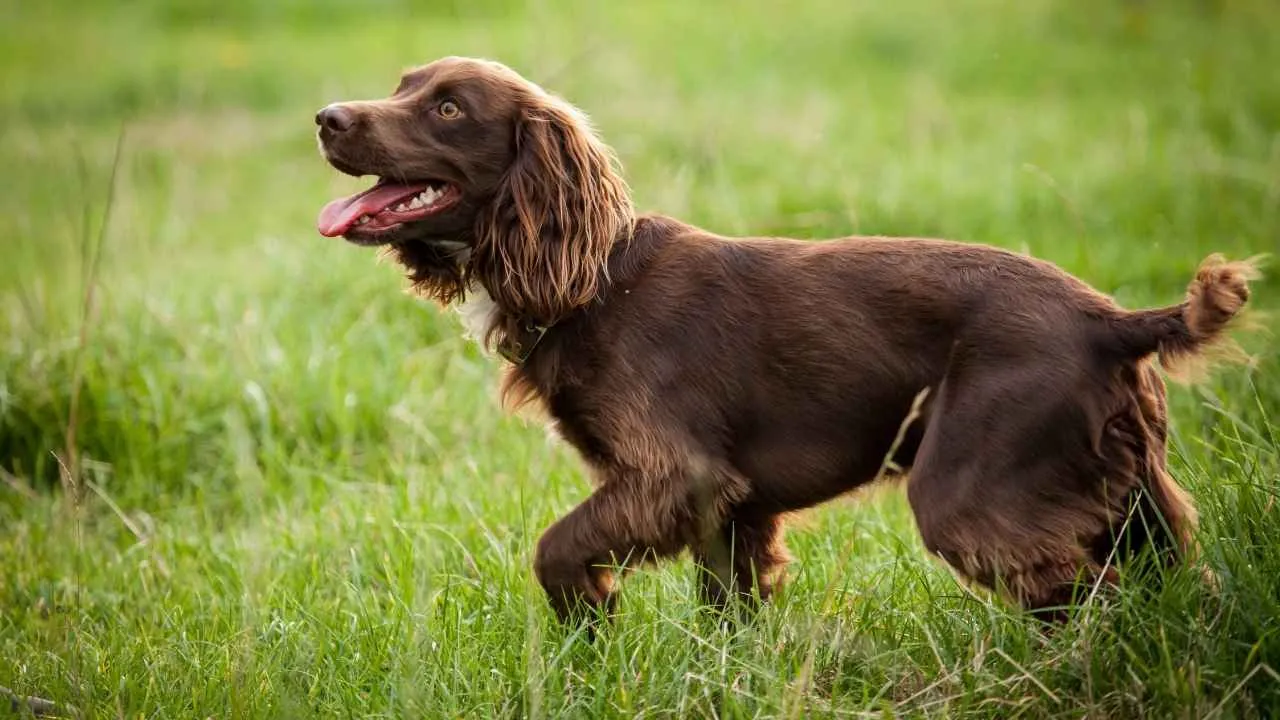
The American Water Spaniel is bred for the marshy shores and icy waters of the Great Lakes. This medium-sized gundog boasts webbed feet, a thickly padded build, and a dense, waterproof coat, all ideal traits for a seafaring companion.
Agile and compact, they can jump in and out of small boats with ease, often without causing the slightest ripple. Their natural love for water and willingness to work make them excellent boating partners, especially for those who enjoy fishing or waterfowl hunting.
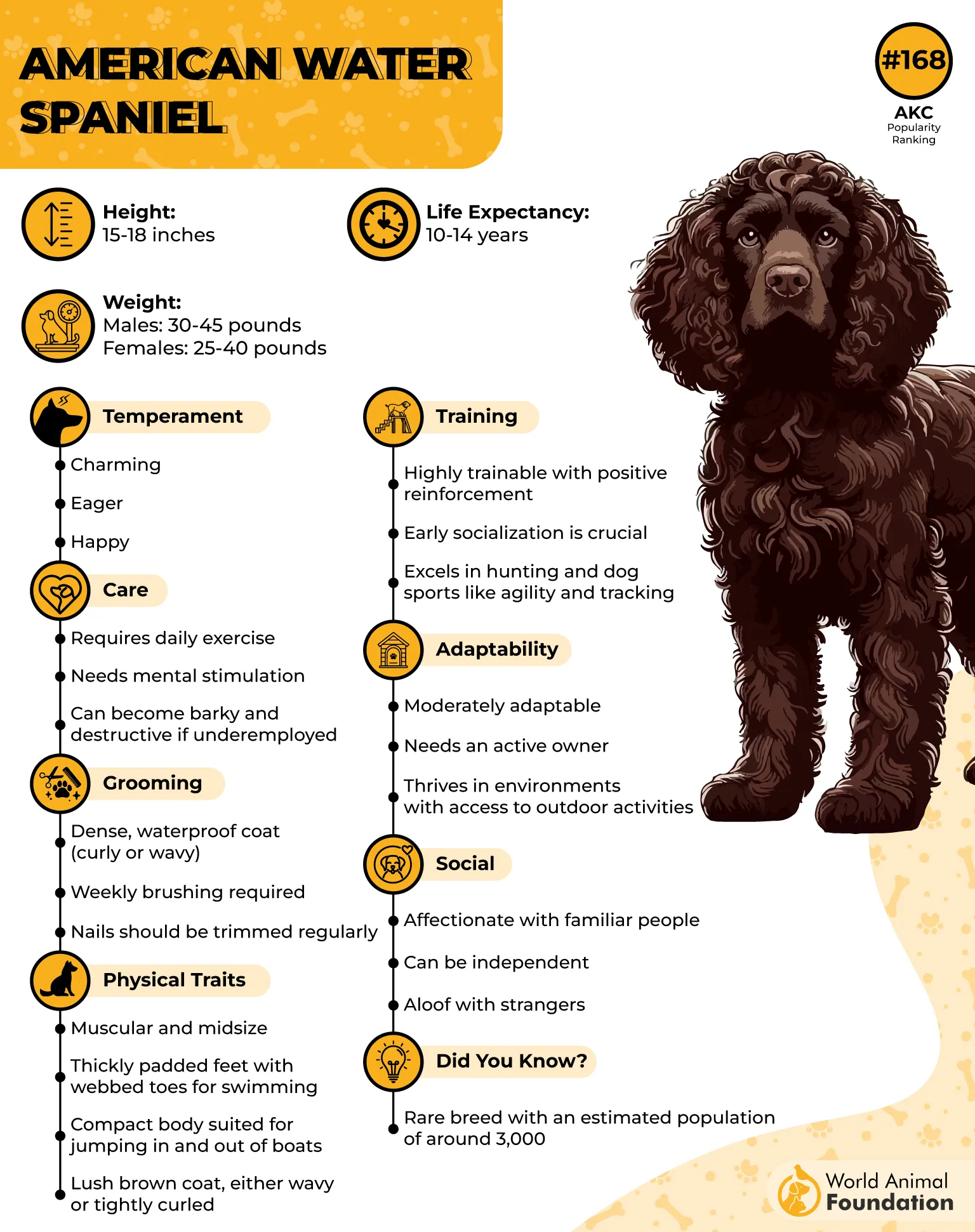
Temperament
The American Water Spaniel is an energetic, intelligent, and eager-to-please breed. They bond closely with their humans and thrive on activity, particularly when they can be by your side outdoors.
While they may be a bit reserved with strangers and show streaks of independence, their cheerful and charming demeanor makes them enjoyable companions on both land and water. Regular mental and physical engagement is essential to keep them content and well-mannered.
Fun Fact: This breed was developed specifically for the Midwest’s lake country and is so steady on boats that they can hop in and out without rocking the vessel.
5. Poodle

Whether you choose a Standard, Miniature, or Toy variety, these highly adaptable dogs are not only excellent swimmers but also thrive when included in family adventures, especially those on the water.
Their hypoallergenic coats and love for companionship make them ideal for close-quarter environments like boats. Bred for retrieving game from lakes and rivers, they’re built for splashing around and staying balanced on moving surfaces.
Temperament
Poodles are intelligent, social, and eager to please, which makes them easy to train and responsive in new or unpredictable settings like a boat. They form strong bonds with their families and enjoy being involved in every activity.
While the small dog varieties may need early socialization to avoid becoming territorial or overly vocal. Their cheerful, alert nature makes them enjoyable company, whether lounging on deck or exploring shorelines.
Fun Fact: Poodles were originally bred as water dogs for hunting, which explains their natural love for swimming and suitability for boating life.
6. Chesapeake Bay Retriever
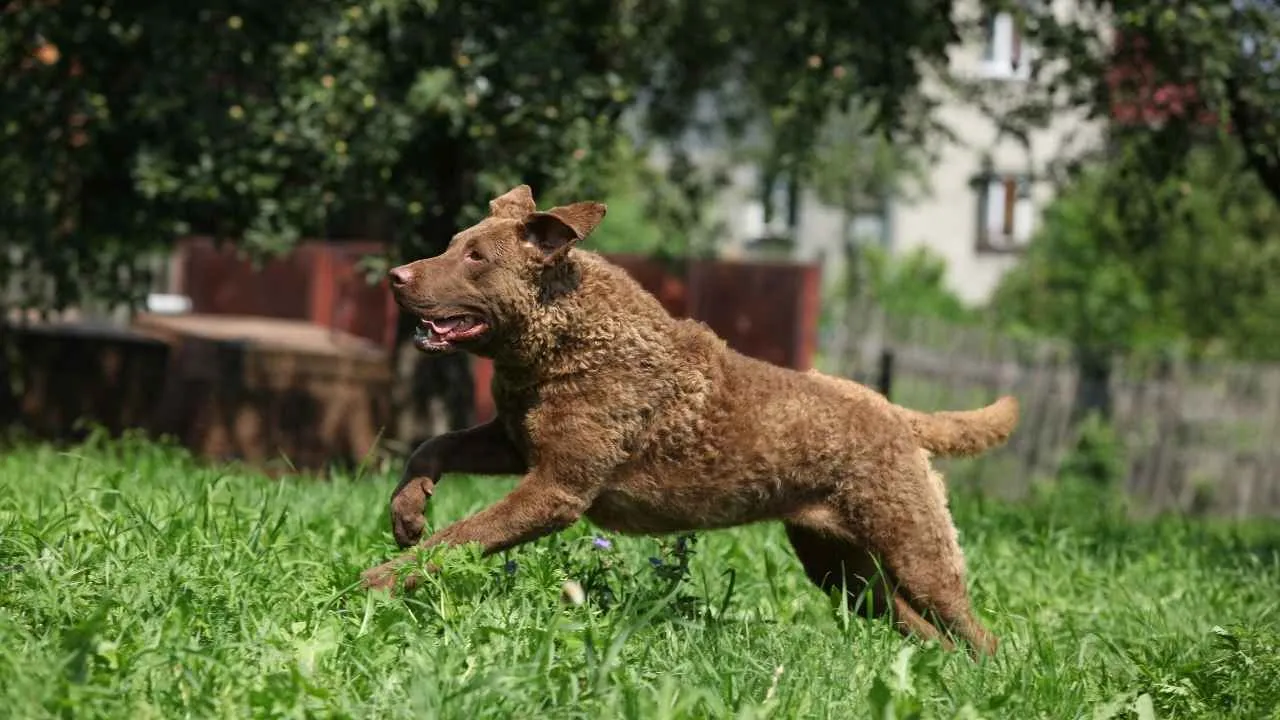
Bred along the shores of the Chesapeake Bay to retrieve ducks in frigid conditions, these dogs are built for aquatic environments. Their dense, waterproof, and slightly oily coats offer protection against the elements, while their strong, athletic build gives them endurance and strength for swimming long distances.
At 55–80 pounds and standing 21–26 inches tall, Chessies are sturdy, water-loving companions that thrive when they have a job to do, like being your boat’s resident retriever.
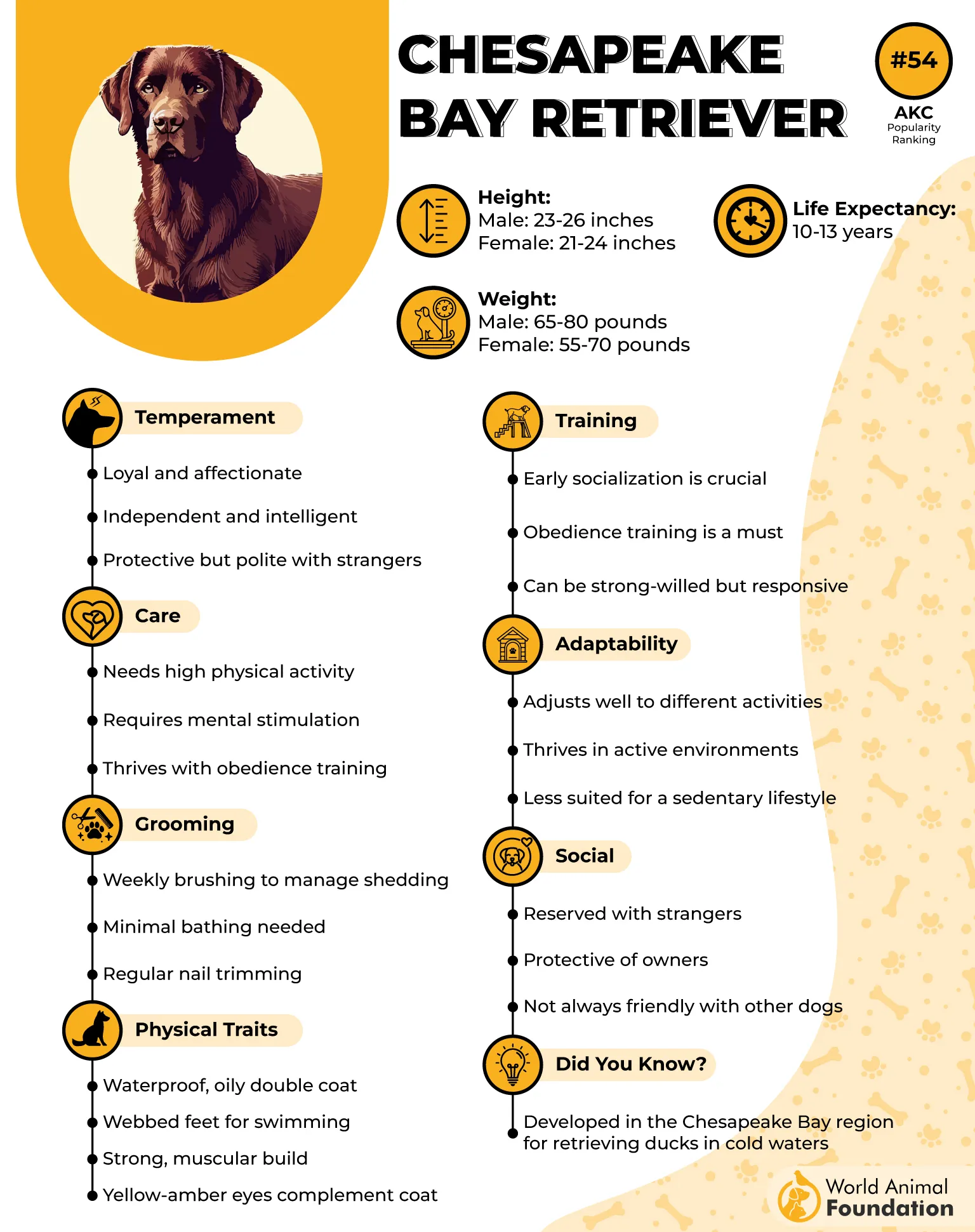
Temperament
Chessies are known for their loyalty, intelligence, and independence. They often consider themselves equal members of the family and will shadow their humans from place to place. Though affectionate, they’re not overly clingy and are generally confident in new settings, including boats.
Their alert and protective nature also makes them reliable guardians when out on the water. Proper socialization is essential, especially around children and other pets, but their trainability and enthusiasm make them an excellent fit for active, outdoorsy families.
Fun Fact: The Chesapeake Bay Retriever is Maryland’s official state dog and is believed to descend from pups rescued from an English shipwreck in the early 1800s.
7. Irish Water Spaniel
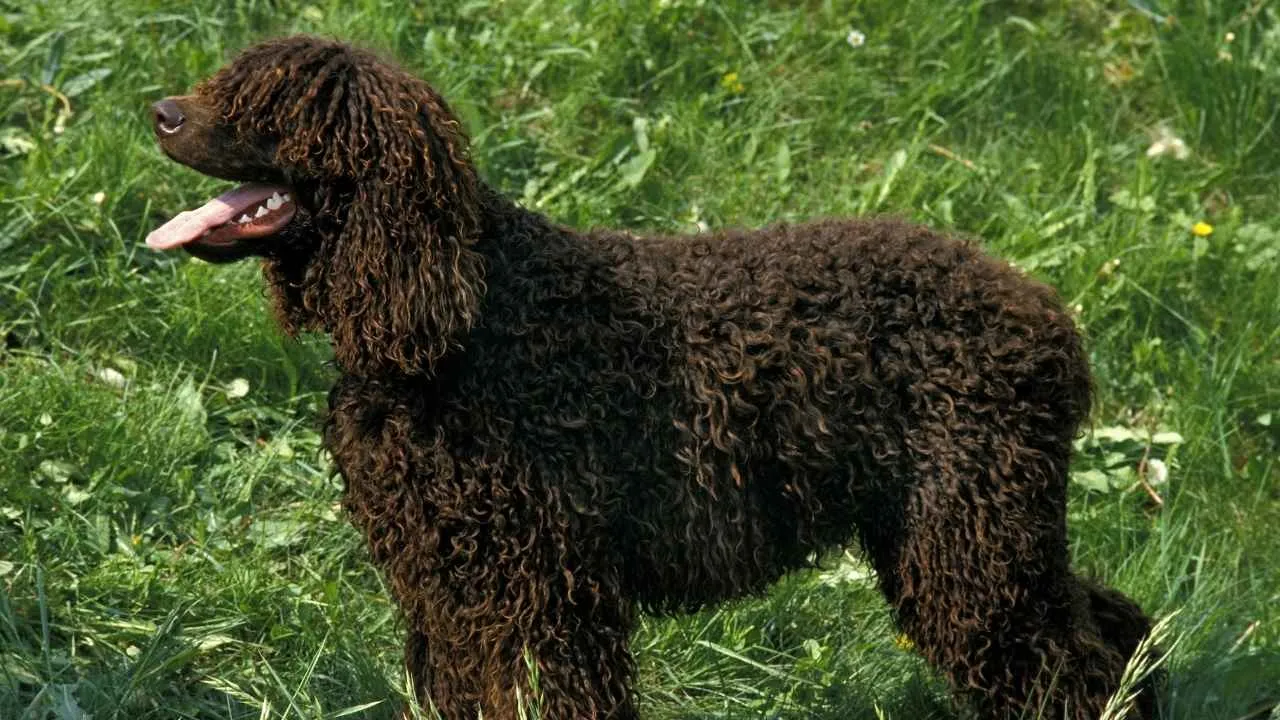
With its water-repellent, curly coat and strong swimming ability, the Irish Water Spaniel is an ideal companion for life on a boat. Originally bred in 19th-century Ireland to retrieve waterfowl from chilly lakes and marshes, this breed is equipped with both the stamina and confidence needed for aquatic adventures.
Thanks to their tall build and efficient stride, they can navigate shallow waters with ease and conserve energy while swimming. While their size, ranging from 45 to 65 pounds, means they’re better suited for larger boats with spacious decks, they excel in water-centric settings.

Temperament
The Irish Water Spaniel is intelligent, trainable, and eager to please, key traits for a successful boat dog. These dogs can quickly pick up complex commands and tend to stay close by, even off-leash, making them easy to manage while onboard.
Their playful nature adds fun to any trip, while their natural instincts help them thrive in water-based activities.
Fun Fact: The Irish Water Spaniel, recognized by the American Kennel Club in 1878, is known for its liver-colored coat and distinctive “rat tail,” which sets it apart from other retrievers.
Conclusion
Choosing the perfect boat dog means more than picking a breed that loves water; it’s about finding a loyal dog breed that’s calm on deck, agile in tight spaces, and thrives in aquatic environments. Breeds like the Irish Water Spaniel exemplify the traits needed for boating life: trainability, stamina, and a love for swimming. But they aren’t the only water-loving dogs out there ready to set sail.
Breeds such as Spanish Water Dogs, Nova Scotia Duck Tolling Retrievers, and even the ever-popular Golden Retriever also shine as natural boating companions. While each dog has its unique needs and strengths, proper preparation, like ensuring your pup always wears a life jacket, can make all the difference. With the right training and care, these and other dogs can become trusted first mates, ready to cruise with you across lakes, rivers, or coastal waters. Wherever you’re headed, there’s a boat-friendly breed out there waiting to join your journey.


